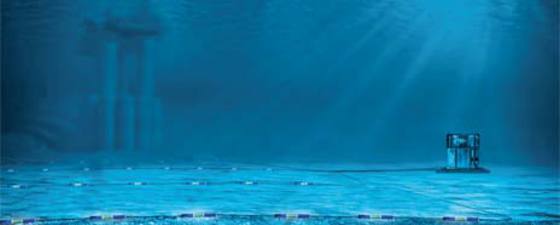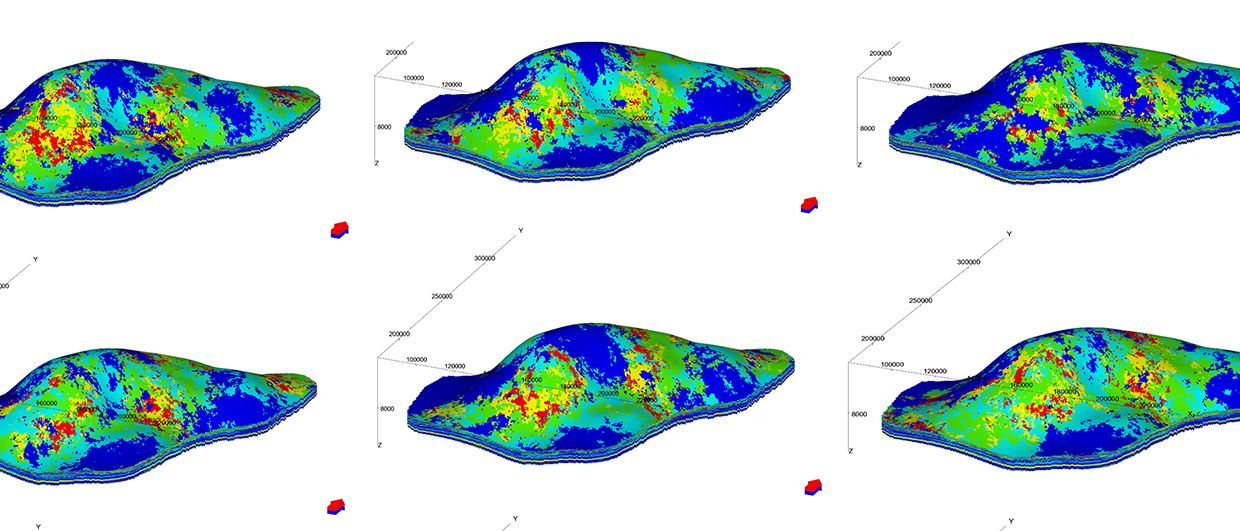In October, OCTIO Group made a successful test offshore Norway of its new permanent reservoir 4C/4D monitoring system.
“This solution will increase oil and gas production, provide early safety warnings and help monitor CO2 storage and other environmental parameters”, claims Bjarte Fagerås, CEO of OCTIO Group.
“The test marks our transition from being a company focused on research and development to becoming an integrated service company. From now on our focus will be on commercial service, operation and market growth,” adds Helge Brandsæter, CEO of OCTIO Geophysical
Over the last years, the company has observed a strong and growing interest amongst oil companies in getting more oil and gas out of existing reservoirs. It is generally assumed that this will be essential to compensate for the reduction in new discoveries as well as being more cost effective. In parallel with the commercialization of the technology, OCTIO is therefore now establishing offices in Houston and Brazil to strengthen their presence in these two emerging markets for 4D operations.
Shooting between icebergs
OCTIO Geophysical was established in 2007 by Reservoir Innovation, Norsk Hydro Technology Venture and ION Geophysical; ION being the world’s largest independent provider of seismic equipment. In 2008, OCTIO Group, the holding company, and OCTIO Exploration, the second business segment, were founded. This was all made possible due to a major investment by the Norwegian shipping company Rieber Shipping, which is now the largest shareholder in OCTIO Group with 60 percent ownership, while Statoil Venture and Reservoir Innovation hold 20 percent each.
OCTIO Geophysical provides equipment, technology and services for offshore reservoir monitoring by using permanently installed seismic sensor systems. The company’s vision is to be an industry leader of on-demand services and technology for reservoir monitoring and be the preferred partner for continuous reservoir monitoring. ION’s new sensor technology, combined with strategic and financial support from dedicated partners, will enable the company to expand in a market which is expected to show significant growth over the next few years.
OCTIO Exploration delivers traditional streamer seismic data acquisition services in the 2D, 3D and 4D market. The company has vast experience in a broad assortment of streamer operations, in addition to specialized expertise in Arctic/Antarctic surveying and containerized portable source solutions. OCTIO Exploration owns and operates the newly upgraded 2D Ice-Class vessel M/V Geo Explorer, which tows a 12 km streamer. The vessel was used by ION in their offshore East Greenland SPAN survey last summer.
“It’s the reservoir content that should vary, not the data”
Why 4D?
 Helge Brandsæter (left), CEO of OCTIO Geophysical, has extensive experience in the seismic industry, having held a number of different management positions within sales and operations, including Senior Vice-President for Technology in GECO and General Manager for the US operations in READ, before joining Reservoir Innovation and OCTIO in 2007. Chief Geophysicist Lars Magnus Pedersen, having served Statoil for 31 years, joined OCTIO Geophysical in 2008, bringing with him more than 15 years experience in the development and implementation of 3D and 4D seismic reservoir characterization in Statoil. Photo: Halfdan Carstens“By increasing the recovery rate by 1 percent, the total added value of the Norwegian petroleum reserves is increased by USD 35 billion, with an oil price of USD 50 per barrel. That’s a big number, and this is where 4D comes into the picture,” says Brandsæter. The BP story on Valhall substantiates this fact, as the operator estimates that the permanent monitoring system on the field will provide 60 million barrels in added production, worth some USD 4 billion dollars.
Helge Brandsæter (left), CEO of OCTIO Geophysical, has extensive experience in the seismic industry, having held a number of different management positions within sales and operations, including Senior Vice-President for Technology in GECO and General Manager for the US operations in READ, before joining Reservoir Innovation and OCTIO in 2007. Chief Geophysicist Lars Magnus Pedersen, having served Statoil for 31 years, joined OCTIO Geophysical in 2008, bringing with him more than 15 years experience in the development and implementation of 3D and 4D seismic reservoir characterization in Statoil. Photo: Halfdan Carstens“By increasing the recovery rate by 1 percent, the total added value of the Norwegian petroleum reserves is increased by USD 35 billion, with an oil price of USD 50 per barrel. That’s a big number, and this is where 4D comes into the picture,” says Brandsæter. The BP story on Valhall substantiates this fact, as the operator estimates that the permanent monitoring system on the field will provide 60 million barrels in added production, worth some USD 4 billion dollars.
The key to IOR (improved oil recovery) is knowledge about the behavior of the reservoir and optimization of reservoir management actions. The reservoir knowledge has to be built on close surveillance data, and the monitoring has to be frequent enough to capture the dynamic behavior of the changing subsurface. The major challenge for the asset teams will therefore be fast learning, fast history matching of simulation models and updated predictions, and finally corrective reservoir management actions.
The IOR actions may be divided into two main classes: First, bring wells to the oil, or second, bring oil to the wells.
Bring wells to the oil
“Repeated 3D seismic imaging, with time lapses of 1 to 5 years, has been successfully applied to monitor reservoir changes at full-field scale since the late 1990’s. The business results of this methodology have been the identification of by-passed oil segments and the guiding of infill drilling targets,” says Lars Magnus Pedersen, chief geophysicist with OCTIO Geophysical.
Having served Statoil for three decades, Pedersen is now looking at the future of reservoir management with the OCTIO technology in mind.
Bring oil to the wells
“The next step-change for 4D seismic aims to map the near-well reservoir modifications which happen over time-lapses of 1 day to 3 months. This requires sensor technologies which are permanently installed on the seafloor and down-hole,” he says.
“The added values are improved modeling of well flow tests and better understanding of connected volumes, drainage area and reserves. The near-well surveillance thus complements the management of inflow or injection by intelligent well completions.”
Pedersen adds that the permanent seismic sensors may also be used in passive surveillance of micro-seismicity induced by reservoir compaction and seafloor subsidence.
“The added value of these observations are improved history matching of compaction drive mechanisms, and the mapping of unstable zones in the reservoir overburden which may cause drilling and completion problems,” says Lars Magnus Pedersen. Another major application area is monitoring of cap rock integrity during injection and storage of produced water, drill cuttings or CO2.
Permanent monitoring
 Bjarte Fagerås, OCTIO Group CEO. © OCTIOAfter more than 2 years developing their new technology, OCTIO is now ready to compete in a tough market consisting of many systems, some using fiber optics, others, like OCTIO, an electric system. Which is the best will be a discussion among experts. Brandsæter favors the electric option because of its durability and reliability, and hence also longevity, and is of the opinion that fiber optics will have their problems in deep water.
Bjarte Fagerås, OCTIO Group CEO. © OCTIOAfter more than 2 years developing their new technology, OCTIO is now ready to compete in a tough market consisting of many systems, some using fiber optics, others, like OCTIO, an electric system. Which is the best will be a discussion among experts. Brandsæter favors the electric option because of its durability and reliability, and hence also longevity, and is of the opinion that fiber optics will have their problems in deep water.
“When developing our technology we have been particularly concerned about durability,” Brandsæter emphasizes.
Fagerås has great expectations for the future. Firstly, he strongly believes in a growing market for 4D seismic, as there is a pressing need to recover as much as possible from the reservoir. Secondly, while he considers the streamer technology a “drilling tool”, acquiring 4D seismic with permanent systems enables what he refers to as “day to day seismic”.
“Permanent monitoring of the reservoir should be done with a permanent system,” Bjarte Fagerås concludes.





